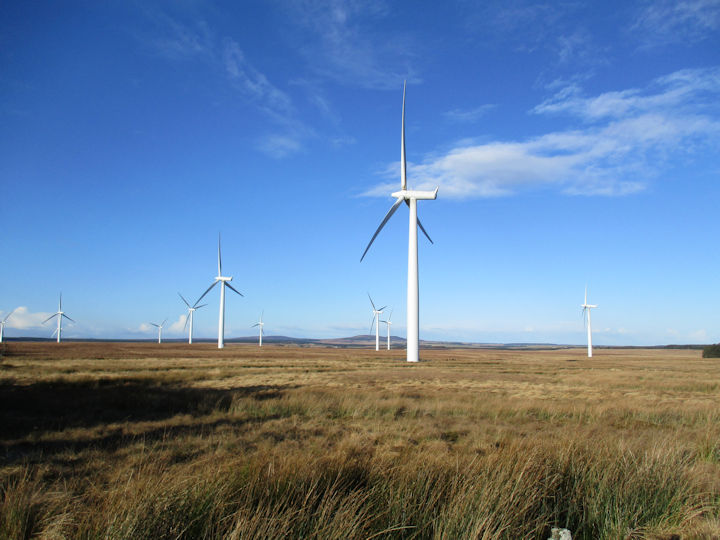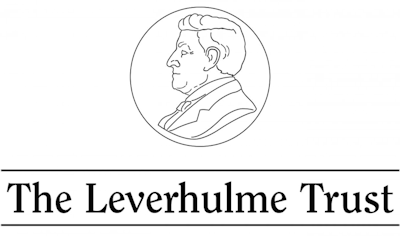Quantifying carbon accumulation and loss in afforested peatlands

Overview
Peatlands have been accumulating carbon since the last ice age. There has been an increasing recognition of the importance of the huge quantities of carbon stored in bogs to global climate change.
In the second half of the twentieth century trees were planted across many British bogs, on areas that were not previously considered suitable for forestry. Made possible by technological improvements and encouraged by grants and tax breaks, large areas were afforested.
In particular, the Flow Country of northern Scotland was targeted for forestry. But how does the presence of these trees affect the carbon already stored in the peat? Will afforestation turn peatlands from a net sink to a net source of carbon?
This project is funded by the Leverhulme Trust, and is a collaborative venture between researchers at the Universities of York, Highlands and Islands, Edinburgh, Aberdeen, and the Forestry Commission.
Project description
Peatlands are estimated to store 3000 megatons of carbon in the UK, and the effect of planting trees on these areas is not fully understood.
Historically, British peat was not suitable for forestry due to high water tables and a lack of nutrients. Planting involves draining the peat which, followed by canopy closure, ultimately produces much drier conditions. This aeration of the peat can lead to an increase in CO2 produced by respiration, as well as reduction in the anaerobically generated CH4. How the production of these greenhouse gasses balance, as well as loss of carbon dissolved in water, will determine whether these peatlands become a net sink or source of carbon.
Many previous studies have considered the flux of greenhouse gasses in these systems. Some have also considered dissolved carbon lost through the water drained off the sites. This will only provide a snap shot of processes which can be highly changeable in commercial forestry stands which can grow for decades. There is also a lack of study on plantations in Briton. By sampling peat cores within plantations, and comparing them to similar cores from untouched bogs, an assessment of the long term effects on peat carbon is possible.
This project aims to use tephra-chronology to quantify the changes in carbon storage within the peat. Tephra are shards of volcanic glass which are distributed across distances of thousands of kilometres by large eruptions. As they are deposited across wide swathes of peatlands at the same time, these tephra layers can be used as stratigraphic markers to allow comparison of carbon accumulation over a known period. New techniques have been developed to allow rapid identification of these layers.
As well as producing an inventory of carbon stocks, the project will provide one of the most extensive inventories of Scottish tephra as yet undertaken.
The project will also quantify carbon storage in tree stocks to give a complete carbon budget for planted and unplanted areas. Will the accumulation of carbon by trees compensate by carbon lost by peat? As many of the initial forest stands are coming to harvesting age, the question of whether to replant trees or restore the bog had become pressing. By examining restored sites the project will examine the effects of future management strategies.
The team
Roxane Andersen a Senior Research Fellow, leading ERI’s “Carbon, Water and Climate” theme and coordinates the Flow Country Research Hub, the network of researchers and stakeholder interested in the Flow Country peatlands. She is also deputy chair of the Commission on Restoration for the International Peatland Society. Her research focuses on linkages between above- and belowground communities and processes in terrestrial ecosystems, with a strong bias towards peatlands.
Russell Anderson has an MSc in Forest Science from the University of Edinburgh. He started working for the Forestry Commission’s Research Division in 1978 and is the Forestry Commission’s peat expert, continuing to research restoration of peatland and other open habitats from forestry, most recently how peatland use affects the ecosystem goods and services it provides.
Roland is a Quaternary geologist who specialises in sea-level and coastal wetland studies and is a Chair in Physical Geography at the University of York. He uses salt-marsh sediments, and the fossils preserved within, to reconstruct sea-level changes over decadal, centennial and millennial timescales. He is the former President of the INQUA Commission on Coastal and Marine Processes and a contributing author to the sea-level chapter of the IPCC Fifth Assessment Report.
Dr. Peter Gilbert
Peter joined the ERI in July, working predominantly on the ‘Carbon, Water, and Climate’ theme, including the quantifying carbon accumulation and loss in afforested peatlands project. Throughout his BSc in Environmental Management (Northumbria University) and MSc in Environmental Biogeochemistry (Newcastle University) he developed a strong interest in the carbon cycle, with his PhD (Northumbria University) focusing on the sediment carbon stocks within, and GHG fluxes from, pond systems across Britain. His role in the Leverhulme Project is to act as a base of support for research in Caithness, Scotland.
Dmitri uses peat bogs to understand environmental and climate change. Evidence for change in mire surface wetness driven by climate change, from European and Argentinian raised bog profiles, have indicated the potential influence of changes in solar activity driving these climatic change events. He has also been involved with the refinement of 14C wiggle-match dating to generate accurate and precise chronologies, in collaboration with colleagues from the Universities of Amsterdam, Uppsala and Belfast.
Anthony’s research is centred around the development and application of tephrochronology (including ocean-transported pumice), understanding human impact and interactions with the environment since Icelandic settlement 1200 years ago (working closely with archaeologists), late glacial-Holocene Icelandic sea-level change and its glaciological implications and the development of online academic resources. Using tephrochronology to help understand carbon content of peat is a return to his original research involving Scottish cryptotephras.
Thomas Sloan
Thomas is the project PhD student, and has a BSc in Ecology, Conservation and the Environment from the University of York. Thomas has several years of technical experience in environmental, climate and agricultural research in the UK and abroad. Most recently, he worked on the Peatlands Ecosystem Services UK project, a Defra funded study into the effects of management strategies on carbon storage and other ecosystem services in the Yorkshire Dales.

